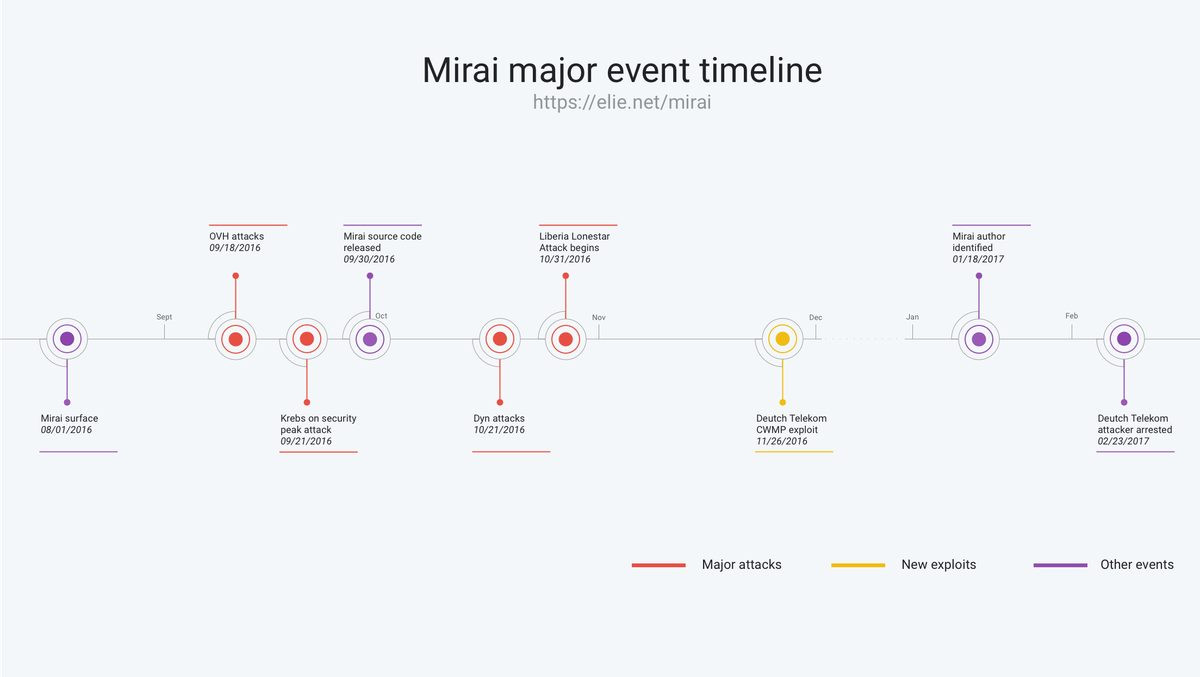Inside the infamous Mirai IoT Botnet: A Retrospective Analysis


This is a guest post by Elie Bursztein who writes about security and anti-abuse research. It was first published on his blog and has been lightly edited.
This post provides a retrospective analysis of Mirai — the infamous Internet-of-Things botnet that took down major websites via massive distributed denial-of-service using hundreds of thousands of compromised Internet-Of-Things devices. This research was conducted by a team of researchers from Cloudflare (Jaime Cochran, Nick Sullivan), Georgia Tech, Google, Akamai, the University of Illinois, the University of Michigan, and Merit Network and resulted in a paper published at USENIX Security 2017.

At its peak in September 2016, Mirai temporarily crippled several high-profile services such as OVH, Dyn, and Krebs on Security via massive distributed Denial of service attacks (DDoS). OVH reported that these attacks exceeded 1 Tbps—the largest on public record.
What’s remarkable about these record-breaking attacks is they were carried out via small, innocuous Internet-of-Things (IoT) devices like home routers, air-quality monitors, and personal surveillance cameras. At its peak, Mirai infected over 600,000 vulnerable IoT devices, according to our measurements.

This blog post follows the timeline above
- Mirai Genesis: Discusses Mirai’s early days and provides a brief technical overview of Continue reading
 Reports indicate AWS support could be waning.
Reports indicate AWS support could be waning. Service providers say 5G challenges require using NFV, SDN, and MEC.
Service providers say 5G challenges require using NFV, SDN, and MEC. The Colorado startup graduated from Techstars accelerator program this year.
The Colorado startup graduated from Techstars accelerator program this year. One site in Chicago is already operational, and a second will come online this month.
One site in Chicago is already operational, and a second will come online this month. Cohn has been a leader in open source SDN and NFV.
Cohn has been a leader in open source SDN and NFV.

